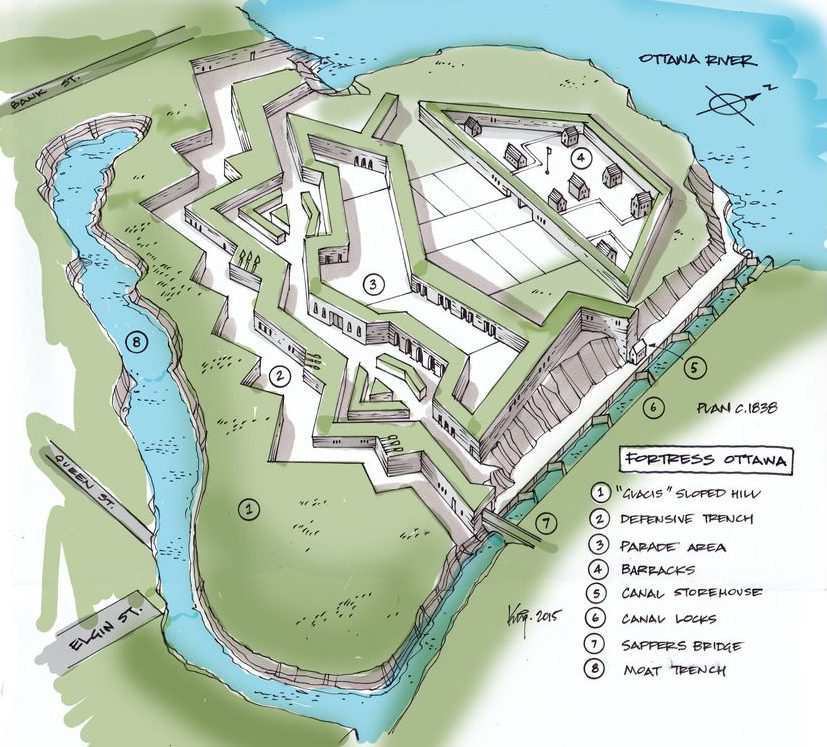Colby Cosh points out that the historical Christian equivalents to modern day ISIS fanatics are not the Puritans, but the so-weird-it-must-be-fiction Anabaptist Kingdom of Münster in 1534-5:
One thing about this sculpture group [the International Monument to the Reformation] is: the foursome is terrifying. The depiction would not be so accurate and meaningful if it weren’t. Knox, in particular, has the face of a killer. The four men wear clerical robes and have long beards. They wield holy books as if they were weapons, which, in their hands, they were. The Reformed Protestant faith is a faith of the book; it sought to displace traditions, hierarchies, customs, culture, and authorities, and to replace them with the Word of God.
In its extreme manifestations, the Protestant Reformation was an annihilating tidal force of literal iconoclasm—the destruction of religious images and relics. There is still a visible scar across the face of northern Europe resulting from the preaching of Calvin, Zwingli, and Knox: in a belt from Scotland to Switzerland, you can find damaged antiquities, desecrated church reliefs, physically insulted Madonnas.
The attacks on religious art are easy to date: they spread outward from Zurich in much the same manner as the epidemic European political revolutions of 1848. Holland is where the iconoclastic rioting was most intense, and it arguably still influences the Dutch aesthetic character. They have a taste for minimalism and abstraction you can detect in Mondrian or M.C. Escher or the mathematician-artist Piet Hein. (Kenneth Clark made this connection in passing in his television series Civilisation, linking Mondrian to Pieter Saenredam’s 17th-century paintings of spare, whitewashed Calvinist church interiors.)
The Protestant Reformation had many personalities. One of them, ejected from the mainstream of European history in Darwinian fashion, was “crazy as all hell.” (Read about the Kingdom of Münster and tell me that, even correcting the record implicitly for propaganda and prejudice, this wasn’t just 16th-century ISIL.) When commentators talk of an “Islamic Reformation” they are looking back at reformers of tolerant, generous spirit, scholars like Erasmus and Melanchthon who infused the word “humanist” with the positive connotations it still has.
The Kingdom of Münster was founded by fanatic Anabaptists after throwing out the existing Lutheran local council and driving away the Bishop and his troops in 1534:
So in 1534, with most non-Anabaptist men leaving and large number of Anabaptists immigrating into the city to be part of the upcoming “big show”, the city council (to this point solidly Lutheran) was taken over legally by the Anabaptists, and the ruling Bishop of the city was driven out of the town. But the Bishop and his soldiers (they had such things then) did not go far. Unhappy with the treatment they received, they laid siege to the city and blocked any supplies from entering and leaving the city.
With everything falling into place, the people of the city began to refer to themselves as “Israelites” and the city as “New Jerusalem”. Jan Matthys now introduced the idea of a community of goods and all property of all citizens who left (sorry ladies, there’s a new sheriff in town) was confiscated and all food was made public. People could keep what they had, but they were required to leave their houses unlocked at all times. The use of money was eliminated, and all resourced were now pooled for the common good. No longer was there any idea of private property, everything was owned by the public.
One day, convinced and prophesying that God would protect him, Matthys rode out to meet some of the Bishops troops who were laying siege to the city. Charging right into a group of opposing soldiers, Jan Matthys proved a poor prophet and was made quick work of by the soldiers. The soldiers placed his head on a pole for the entire town to see, and did other really, really bad things to his body.
And the story may have ended there (sound familiar), but on of the people Matthys had baptized earlier was a charismatic young man named Jan van Leyden. The story goes that after Matthys’ death, van Leyden is said to have run through the streets naked, foaming at the mouth, and speaking incoherently before collapsing and remaining unresponsive for 3 days. Van Leyden claimed that God revealed many things to him during these three days, and things in Strasberg were going to change. Oh were they ever.
After a few victories over the bishop’s armies, van Leyden had himself anointed “King of Righteousness” and the “King of Zion” – the absolute prophet and ruler of the city whose word was equivalent to God’s. Any resistance to his rule was ruthlessly suppressed.
Van Leyden then instituted polygamy in the city. He used the Old Testament to justify it (like all great nut jobs), but it was well known that van Leyden had a desire for Matthys’ young widow. But aside from lust (van Leyden had 16 wives!!!), polygamy did serve a practical purpose in the city. It helped deal with a ratio of women to men in the city being about 3 to 1, and also was seen as a way to increase the population of the city to 144,000 (required for the beginning of the end).
At this point, a few people became a little unhappy with the “direction” the city is moving. Van Leyden, a master of persuasion, had all resisters are executed (men) or imprisoned (women). One of these “unhappy” people was one of van Leyden’s 16 wives. In a “women belong it the kitchen” moment, van Leyden publicly beheaded her himself and trampled on her body.




